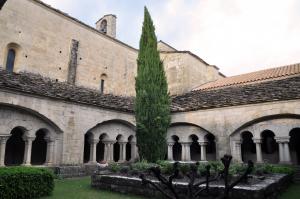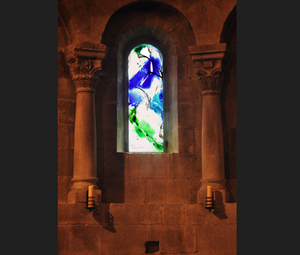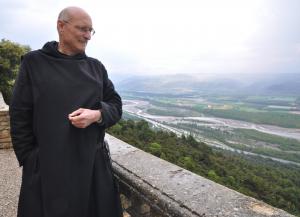Contemporary Korean art in 10th century monastery
On a clear day, the view extends to the distant peaks of the southern Alps as far as Mount Viso on the Italian border. In all directions the panorama is spectacular. A thousand years ago, the place attracted monks seeking beauty and solitude. Sometime around the year 950, a church and a monastery were built and a Benedictine community established.
Monks lived, worked and prayed here throughout the Middle Ages, the Renaissance and up to the French Revolution at which time they were expelled, the buildings partly demolished and sold as "National Property." For the first time in 800 years, the plateau was deserted. Nearly a century would pass before the religious community would be revived, monks reinstalled and the first, timid reconstruction work carried out.
"We spent five years cleaning up the ruins and rebuilding," explains Dom Michel Pascal, abbot at the time of the community. "Thanks to a recently passed law, we managed to get funds from private companies and launch a real restoration."
Ganagobie now is very much like it was in the late High Middle Ages. The 12th century cloister has been reconstructed based on the few surviving arches, and the old church's 72 square foot mosaic and its bestiary of fabulous animals, the largest in France, has been beautifully restored.
Although living according to community rules formulated more than fifteen centuries ago, the twelve monks of Ganagobie are men of the twenty-first century. They use cell phones, have email addresses and surf the internet. And when faced with the replacement of the church's long-gone stained glass windows, they chose a resolutely contemporary option: they turned to a Dominican monk, the famed Korean-born artist Kim En Jung.




